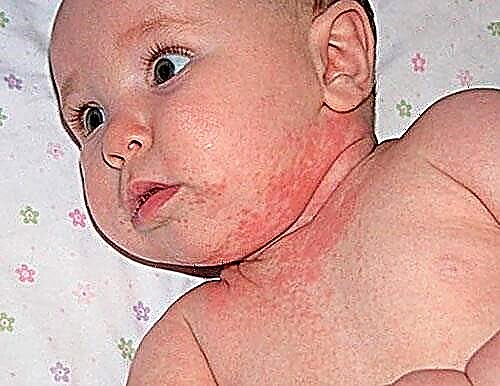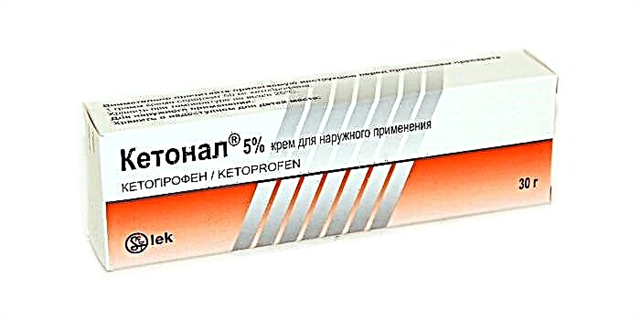When the first teeth begin to erupt in babies, which ones appear first, how to know that the teeth are beginning to erupt (signs and symptoms) and how to help the child get rid of discomfort.
During the first months of life, your little one smiled with a toothless smile. And suddenly a small whitish bulge becomes visible on the gum. This means that the child's teeth begin to cut, first the first, and after two or three weeks the next one will follow. (By the age of three, the baby will have "acquired" all the baby teeth.)
When the first teeth are cut

When the child's first teeth begin to cut, it depends on several factors:
- Heredity.
- Baby food. Is the small body getting enough calcium?
- Climatic living conditions. Children living in hot climates tend to erupt their teeth earlier.
- The gender of the child. Girls cut their teeth earlier than boys (between 6 and 7 months).
Pediatricians are unanimous about which teeth are cut first - these are the lower incisors... Although there are cases that first of all other teeth erupt, and this is okay, because each organism is absolutely individual.
Signs and symptoms of tooth appearance

The frequent question “how to find out / see / understand that a child is teething is a rhetorical question. According to the condition and behavior of the baby, everything will become immediately visible:
- there is redness and swelling of the gums, they itch and hurt;
- salivation increases;
- a sour smell from the mouth appears, due to the decomposition of particles of the mucous membrane;
- cheeks swell;
- the child pulls everything into his mouth and scratches the gums;
- irritability and tearfulness appear.
Sometimes more alarming symptoms appear, because the child's immunity to this moment decreases. The baby has already used the immune protection that the mother gave, and his own immunity is just beginning to be developed. Teething is a strong blow to the body and can be accompanied by the following manifestations:
- a rash on the gums in the form of red bubbles that contain liquid, after the appearance of a tooth, the rash disappears;
- fever caused by gum disease should not last more than three days;
- diarrhea is due to the presence of foreign objects in the child's mouth;
- lack of appetite is caused by sore gums;
- worsening sleep;
- runny nose.
With a prolonged deterioration of the child's well-being, during the period of teething, you need to call the attending physician to exclude other reasons. Perhaps the baby is really sick, since such symptoms are not directly related to teething.
Scheme and timing of eruption
- The first four teeth (upper and lower incisors) appear by 7-10 months.
- The next four incisors come out for the first birthday.
- The first molars from above and below will appear from a year to one and a half years.
- Fangs erupt in the second half of the second year of life.
- The second molars complete the row of deciduous teeth by the third year.
(Clickable)

The list shows that it is impossible to say the exact date of teething.
Most often, the first teeth begin to appear at about seven months, but this is not a postulate.
Late teething shouldn't be a cause for panic. It used to be considered late appearance of teeth a sign of rickets or calcium deficiency. Modern pediatricians consider a delay in teething to be a normal occurrence for completely healthy children.
Some atypical timing of the appearance of teeth may be indirect symptoms of disorders in the child's body:
- Teething two or more months later may be the result of an infectious disease, metabolic disorder or intestinal dysfunction.
- the eruption of the first tooth two months earlier may indicate endocrine disorders.
- eruption outside the gum is the result of an incorrect position of the tooth axis.
- the birth of a child with teeth occurs, although rarely; these teeth are removed so that it is convenient for mom to breastfeed.
However, only a complete thorough examination of the child will confirm the presence of certain violations.
If a one-year-old child has not begun to grow teeth, it is worth contacting a dentist. Most often, upon examination, the doctor will find swollen and reddened gums. You just need to stimulate the appearance of teeth with massage. In rare cases, a diagnosis is made - adentia, confirming the complete absence of tooth buds.

How to help a child
 In this difficult period, you need to know how to help the child, relieve his pain and discomfort. The methods are simple and developed over the years:
In this difficult period, you need to know how to help the child, relieve his pain and discomfort. The methods are simple and developed over the years:
- Massaging the gums will relieve pain. You have to run it with your finger, before you wash your hands thoroughly. Massage carefully so as not to injure the gum.
- Give the baby a teether toy. The choice of such rubber, silicone or gel accessories is large and can be purchased at the pharmacy or children's store. (read about teethers).
- The cold helps relieve itching and pain in the gums. You need to soak a soft cotton napkin in cool water, put it in the refrigerator and let your baby chew. You can use a decoction of chamomile instead of water, it will help relieve inflammation. You can also chill a gel teether or pacifier.
Old, proven methods can be supplemented with modern pharmaceuticals. Now in pharmacies there is a large selection of special gels and during pain in a child, you can choose any one and lubricate the gums with it:
- Dentinox;
- Holisal;
- Calgel;
- Baby Doctor;
- Kamistad;
- Dentol-baby;
- Pansoral.
Teething is a delicate process that requires parenting and care. Soreness and swelling of the gums, irritability, increased salivation, which may be accompanied by a wet cough and runny nose, increased stool frequency - these are the main troubles that the baby will have to go through if nothing is done. To ease the condition of the baby during the teething period, we advise you to pay attention to - a completely natural preparation, which, thanks to the complex action of herbal ingredients, helps relieve all the main symptoms of teething in a child, helping parents and babies to overcome this period more calmly.
Read more about gels: TOP - 7 gels for teething
Dental gels do not interfere with the teething process itself. They only relieve pain, since such funds include lidocaine and menthol. When using these funds, it is necessary to monitor the child's reaction, as they can cause an allergic reaction. The action of the gels lasts no more than 20 minutes, they can be applied no more than five times a day and no longer than three days.
Pain relievers can be used if severe pain occurs. Before giving the baby medicine, be sure to consult with your doctor.
Excessive salivation irritates the baby's delicate chin skin. It is necessary to constantly wipe the saliva and lubricate the skin with baby cream. During this period, all small and fragile objects must be removed from the child's environment. The kid pulls everything into his mouth and can get hurt, swallow an object or suffocate. All baby toys must be disinfected for the same reason.
Care of the first teeth
The baby's first teeth require new responsibilities from the parents. Even one tooth already needs to be cleaned - this is both a hygienic necessity and the formation of a healthy habit of taking care of the cleanliness of teeth. To do this, buy a special silicone tip on the finger or use a bandage soaked in boiled water. The procedure is carried out regularly: after breakfast and in the evening, carefully rubbing the teeth, gums and tongue before going to bed.
A little later, they start using a children's toothbrush with soft bristles and toothpaste with a minimum fluoride content. You need to change the brush every month. It must be used carefully, because the enamel at the first teeth is thin and you can easily break its integrity. Parents should brush their teeth, only after two years the child can begin to brush his teeth himself, but only under the supervision of adults. It is important to immediately teach your baby to brush his teeth regularly and correctly - this will save him and his parents from many dental problems in the future.
Cool calendars
Print your favorite teething calendar and don't forget to fill in 🙂




- Associated problems with teething
- How to relieve your child's pain during teething: 5 effective tips
- Folk remedies for teething
- Why does an infant drool - the reasons and what to do



